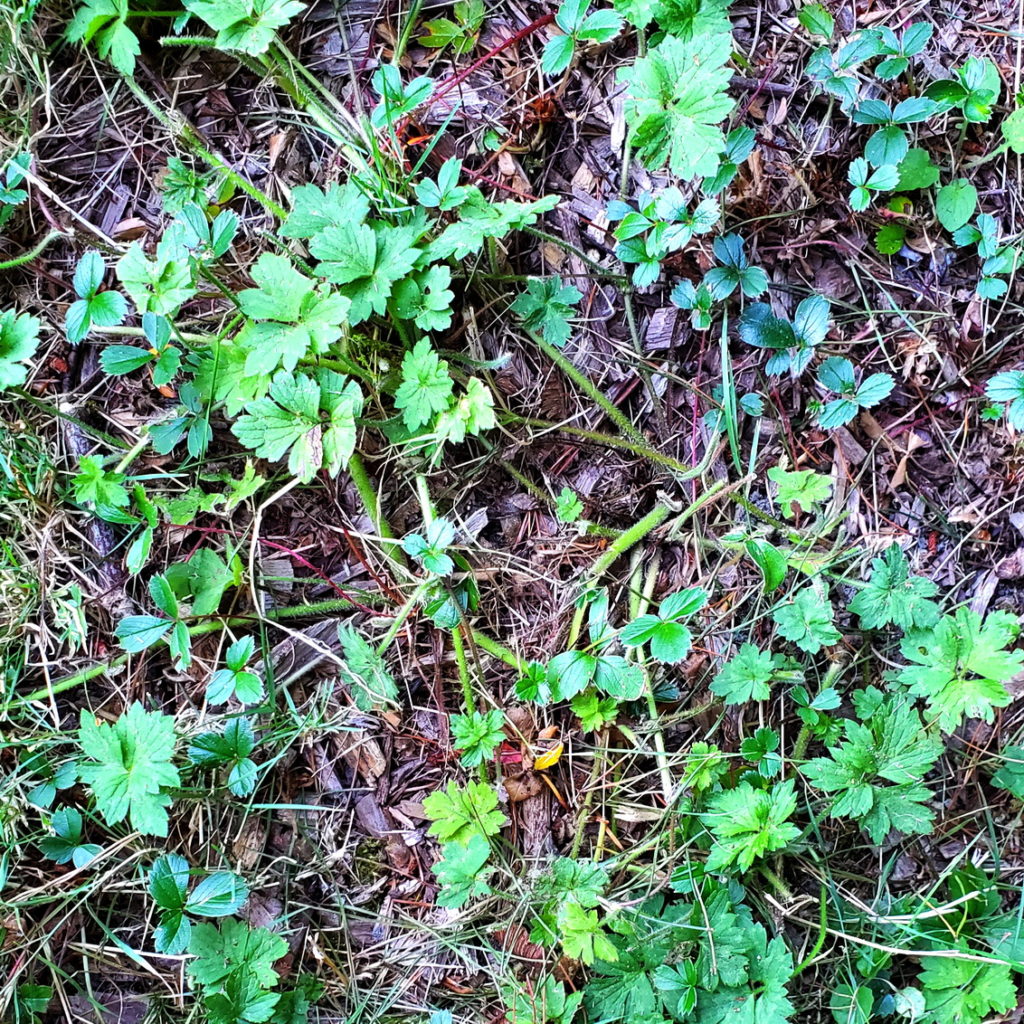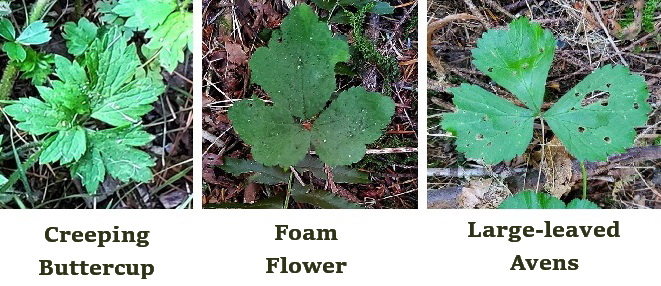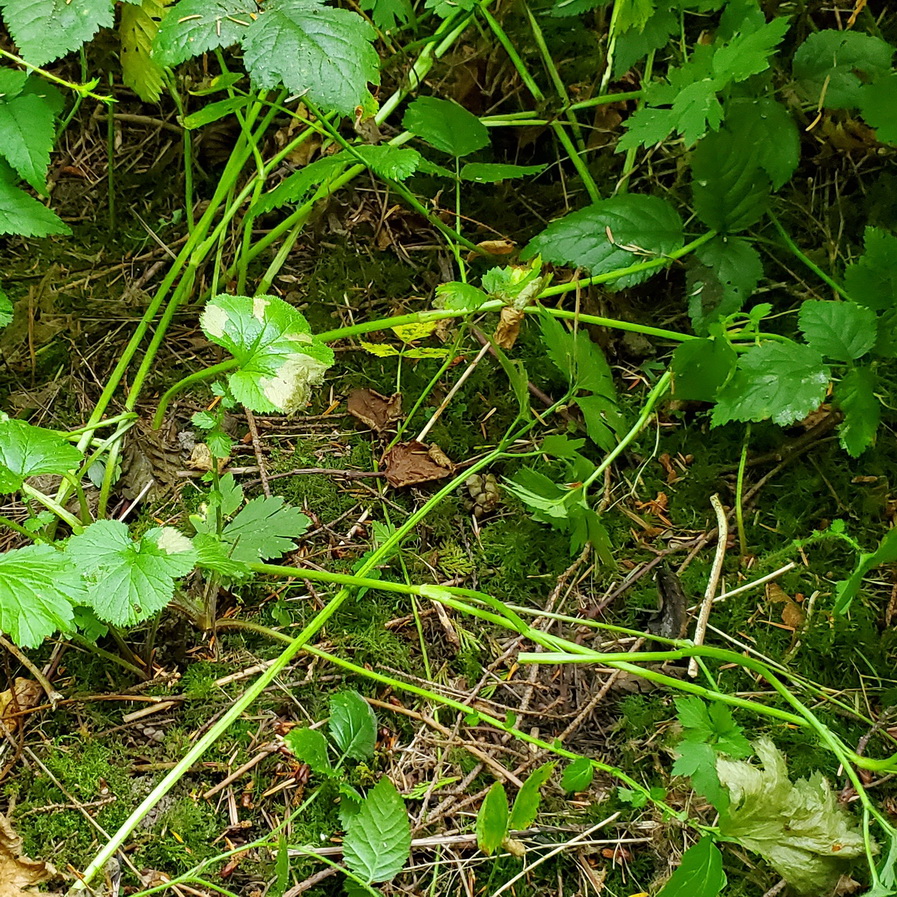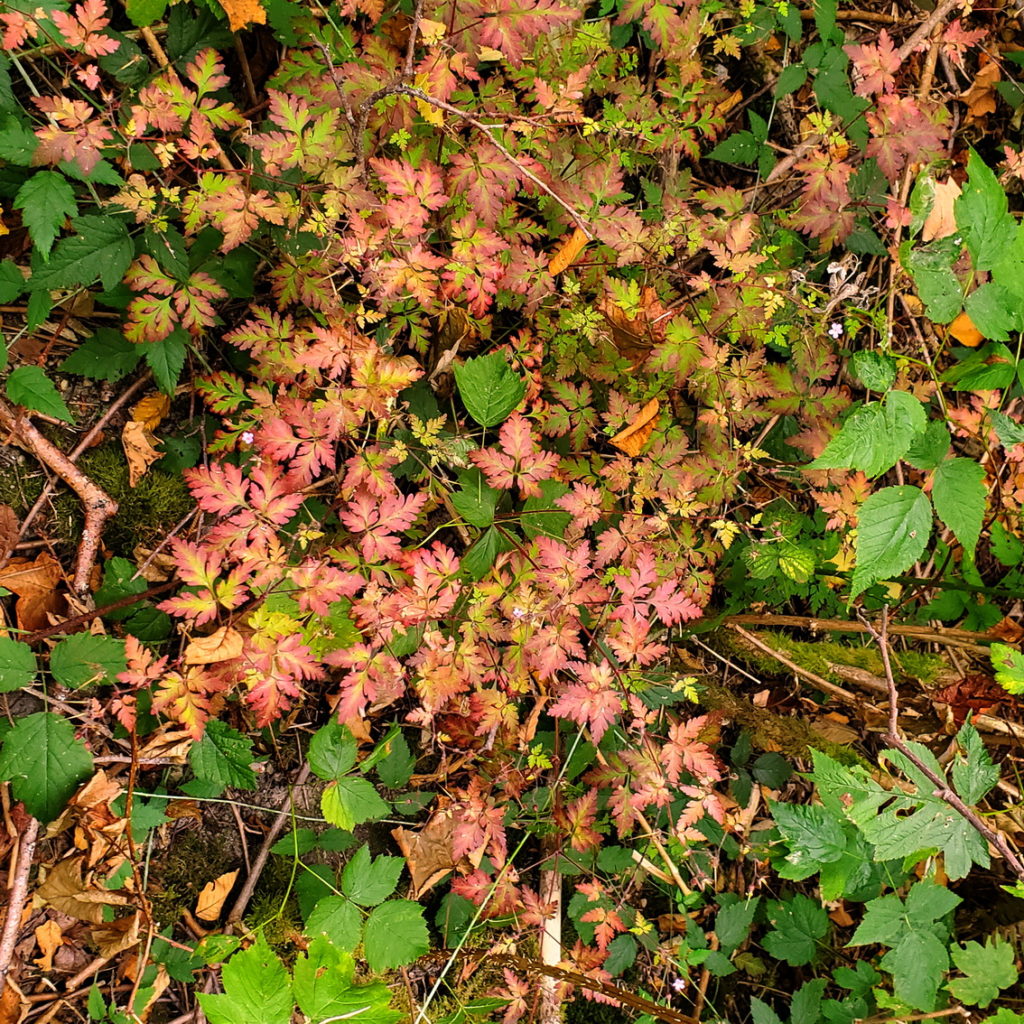Removing Creeping Buttercup and Herb Robert in the Dry Season
Almost by definition, invasive plants are difficult to control, but most of them have weaknesses that can be exploited. Often, these weaknesses are associated with their life cycles and times of the year when attempts to remove them may be more successful. Consistent with this theme, I think the dry season can be a good time to remove Creeping Buttercup and Herb Robert.
Creeping Buttercup – Look for the Runners
One weed I work on during the dry season is Creeping Buttercup, a King County “weed of concern.” It’s easy to spot amidst indigenous forbs this time of the year because of its pale-colored runners that spread along the surface of the ground.

Two other three-leaved forbs, Foamflower, and at times Large-Leaved Avens, don’t produce runners. The pictures below show how similar the leaves can appear.

The removal of Creeping Buttercup in the dry season works best in light soil from which the roots come out more easily, especially those of new plants taking root at the nodes of runners. Removing Creeping Buttercup, especially when it’s growing in its favored heavy soils, is always aided by a hand tool like a weeding dagger.

Herb Robert – Grab the Button
Herb Robert is a Class B weed in the State of Washington thus requiring control in some counties. Early in the growing season, the Herb Robert plants that have overwintered begin to bloom, and about the same time the next generation begins to germinate. By late summer, some of the first-year plants can be 12” in diameter and over 6” tall, and as the season progresses, I think there are fewer and fewer Herb Robert plants to remove due to natural culling. This may be the result of underground competition for moisture and nutrients, and the same process may explain why “there appear to be fewer native herbaceous species” in areas where Herb Robert occurs.
From August on, the surviving first-year plants are easier to spot in amongst other plants. For example, as Pacific Bleeding Heart begins to die back, the Herb Robert that has “been hiding” becomes more visible.

Herb Robert can be relatively easy to pull from light, dry soil provided one wiggles and pulls from the button (here). Because first-year plants are usually still bloom free in the fall, I personally think it’s okay to compost them on site instead of trashing them like second-year plants that are blooming or have gone to seed.
